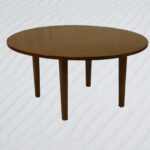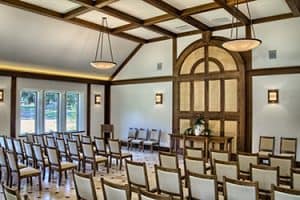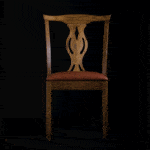When embarking on the journey of furnishing a university space, numerous considerations come into play to create an environment that seamlessly blends functionality, aesthetics, and practicality. The process involves careful evaluation of each furniture element, from size and comfort to durability, materials, and price. Striking a balance between style and functionality becomes essential in fostering an atmosphere that enhances the overall university experience. This comprehensive guide explores 20 key factors to consider when purchasing university furniture, addressing aspects such as mobility, cleanability, customization, and ergonomic design. Furthermore, the discussion extends to the importance of warranty, stacking options, and the environmental impact of furniture materials. Additionally, the significance of supporting local industries is highlighted, emphasizing the benefits of opting for furniture made in the USA. This guide serves as a valuable resource for institutions seeking to create well-designed university spaces.
Size
When purchasing university furniture, meticulous consideration of size is paramount. Ensure that each piece aligns harmoniously with the spatial dimensions, taking into account the room layout and providing flexibility for various seating arrangements to optimize the functionality of the space.
Comfort
Prioritize the comfort and practicality of university furniture to enhance the overall user experience. Choose seating options that not only complement the aesthetic but also provide ergonomic support, fostering an environment conducive to extended study sessions and collaborative activities.
Durability
Longevity is a key factor in university furniture selection. Opt for furniture designed to withstand the rigors of daily use, ensuring a durable and cost-effective investment that can endure wear and tear over time, ultimately contributing to the longevity of the university’s furnishings.
Materials
Consider the materials used in university furniture, with a preference for durable options such as solid wood. This choice ensures not only a robust and resilient construction but also contributes to the aesthetic appeal of the furniture, creating a cohesive and enduring atmosphere within the educational setting.
Price
Establish a clear budget for university furniture, striking a balance between affordability and quality. Remember that purchasing furniture one time that will last for decades is much less expensive in the long-term than repurchasing cheap furniture every 1-3 due to joint failure. This careful financial planning ensures that the selected furniture meets budgetary constraints without compromising on the essential aspects of durability, comfort, and functionality.
Style
University furniture should seamlessly integrate with the overall decor of the educational space. Choose pieces that complement the aesthetic vision, contributing to a cohesive and visually pleasing environment that enhances the overall ambiance of the university setting.
Functionality
Prioritize functionality in university furniture selection, ensuring that each piece serves its intended purpose effectively. From lecture halls to collaborative workspaces, functional furniture enhances the adaptability and practicality of university spaces, catering to the diverse needs of students and faculty.
Mobility
Consider the mobility of university furniture, opting for pieces that can be easily moved to accommodate changing spatial requirements. This flexibility enables dynamic adjustments to the layout, fostering a versatile environment that can adapt to different teaching and learning scenarios.
Cleanability
Choose university furniture that is easy to clean and maintain, promoting a hygienic and well-maintained educational setting. This consideration is crucial for ensuring a healthy environment, particularly in shared spaces where cleanliness is essential for the well-being of students and staff.
Customization
Seek out university furniture that offers customization options to meet specific needs and preferences. Customizable features contribute to a tailored and personalized environment, allowing the furniture to adapt to the unique requirements of different educational spaces within the university.
Storage
Enhance the organization of university spaces by selecting furniture with ample storage options. This consideration contributes to optimizing space utilization, reducing clutter, and creating a more organized and efficient environment for students and faculty.
Ergonomics
Prioritize the ergonomic design of university furniture to promote the well-being and comfort of students and faculty. Ergonomically correct furniture supports proper posture, reducing the risk of discomfort and fatigue during long study sessions or lectures.
Warranty
When investing in university furniture, prioritize options with a substantial warranty. A warranty of at least 10 years assures the quality and durability of the furniture, offering long-term protection and peace of mind for the educational institution.
Stacking
Evaluate the practicality of purchasing stacking chairs and/or tables for university spaces. Stacking options provide a space-efficient solution for storage, allowing for easy reconfiguration of the space and facilitating efficient use of university facilities.
Assembly
Consider the ease of assembly when selecting university furniture. Opt for pieces that are straightforward to assemble, minimizing disruptions during installation and ensuring a smooth and efficient setup process for the benefit of students and staff.
Maintenance
Choose university furniture that is easy to maintain and repair. This consideration reduces downtime and ensures that maintenance tasks can be efficiently addressed, contributing to the long-term reliability and functionality of the furniture within the educational setting.
Quality
Verify the quality of university furniture by ensuring it is crafted from high-quality materials. High standards of craftsmanship contribute to the overall durability and aesthetic appeal of the furniture, reflecting a commitment to excellence within the educational environment.
Safety
Prioritize safety and security in university furniture selection. Choose options that meet or exceed relevant safety standards, ensuring the well-being of students and faculty by providing a secure and hazard-free environment.
Environmental Impact
Consider the environmental impact of university furniture by opting for pieces made with sustainable materials. This eco-friendly choice aligns with responsible practices, contributing to a greener campus and promoting environmental consciousness within the educational institution.
USA Made
Support local industries and ensure stringent quality standards by choosing university furniture manufactured in the USA. This decision not only contributes to the nation’s economy but also reflects a commitment to promoting excellence and craftsmanship within the educational furniture sector.
In conclusion, the process of acquiring university furniture is a multifaceted endeavor that demands careful consideration of diverse factors to ensure a harmonious blend of form and function. The 20 key considerations explored in this guide provide a comprehensive roadmap for institutions looking to make informed decisions in furnishing their educational spaces. From prioritizing comfort, durability, and ergonomic design to addressing aspects like cleanability, customization, and environmental impact, each consideration contributes to the creation of a conducive and student-centric learning environment. The importance of supporting local industries, exemplified by the craftsmanship of Eustis Chair, underscores the significance of contributing to both quality and sustainability. By adhering to these considerations, universities can create dynamic, adaptable spaces that not only meet the practical needs of students and faculty but also foster an aesthetically pleasing and inspiring atmosphere for learning and collaboration.































